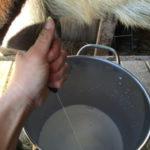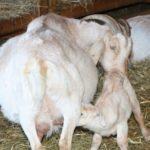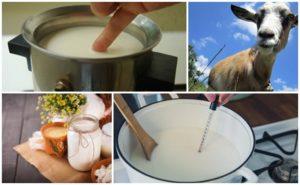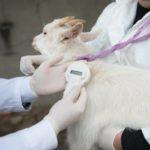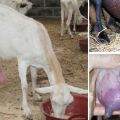How to determine the pregnancy of a goat at home, signs and methods
Beginning goat breeders often face the problem of how to determine the onset of pregnancy in a goat. Sometimes it is not possible to take the animal to the veterinary clinic for an ultrasound scan. The computer scan method shows the fetus in the middle of the term. Therefore, in popular practice, a wide range of methods are used: from groping to checking with a female express pregnancy test. But not all methods are reliable.
Signs of a goat cat
Pregnancy in goats is called fertility, fertility, fertility, or fertility, and lasts, on average, 5 months. Labor can start 5 days earlier or later than the expected date. Symptoms appear in the third or fourth week from the date of coverage, mating of the goat. Therefore, it is important to mark this date on the calendar. You can learn about pregnancy in a short time by observing the behavior and appearance of the animal. But this method of definition is not reliable. Changes in the body of goats are individual and do not always occur.
Appearance
Visual changes in the appearance of the succumb goat:
- increase in body size;
- swelling of the udder.
A few days after mating, hard balls form in the upper udder. In the second half of pregnancy, the udder is full. At a later date, the fetus begins to move, and the goat moans. Body is not always reflected in appearance. Sometimes only a rounded, slightly drooping belly indicates pregnancy. An unexpressed trait remains the only one throughout the entire period, so the breeders remain in the dark until the very birth.
The size of a goat also increases with obesity, which is mistaken for pregnancy.
Genital changes
In non-succinic goats, the genital loop is narrow, the part under the tail is wrinkled. After fertilization, wrinkles are smoothed out, and the loop is poured. At an early stage, wrinkling still remains, but swelling is clearly visible. At a later date, the loop becomes smooth. The vagina swells and turns pink at 10-12 weeks.
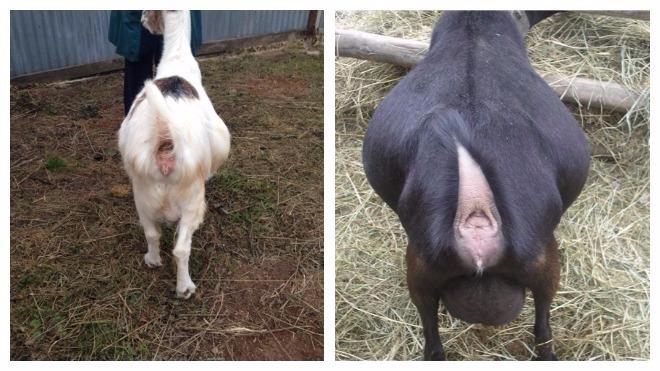
To see the difference, you need to inspect the goat before covering. Experienced breeders even advise taking pictures. According to the observations of farmers, the hungry fossa disappears in the goat after successful coating. The symptom is clearly visible at a later date, but not always immediately after fertilization. Not all goats with a swollen noose disappeared. Therefore, it is more reliable to determine the early pregnancy by examining the loop.
Behavior
A body goat begins to stretch like a cat, stretching its back and hind legs.She shows caution where there were no obstacles before: she does not jump on the roof, over the fence. The animal is frightened by harsh sounds. During pregnancy, appetite increases.
Behavior is also not a reliable sign, since even pregnant goats often remain as usual. Caution appears with the first pregnancy, and with subsequent ones, the animals feel more confident. If, 22 days after coating, the goat does not come into heat, then fertilization has occurred. If she is ready to mate after 1.5 months, then the pregnancy is false.
How to determine if a goat is pregnant at home
It is important to determine the pregnancy rate early in order to start the goat on time - to stop milking. During pregnancy, the body's forces are directed towards the formation of the fetus. Milk will be needed to feed the kids. A goat that has been milked during pregnancy is depleted. Her bones become brittle from a lack of calcium, and her milk is low in nutrients. The kids grow up weak. Therefore, starting or stopping milking saves the health of the animals.
Milking is gradually stopped a month and a half before delivery. The appropriate time is also calculated according to the calendar, counting the days from coverage and focusing on the expected date of birth. During this time, farmers confirm or deny the validity of goats in various ways.
With the help of a goat (reflexological method)
The method is suitable for determining the pregnancy rate in the third week after mating. The goat is taken to the goat and their behavior is monitored. If animals are indifferent to each other, then pregnancy has come.
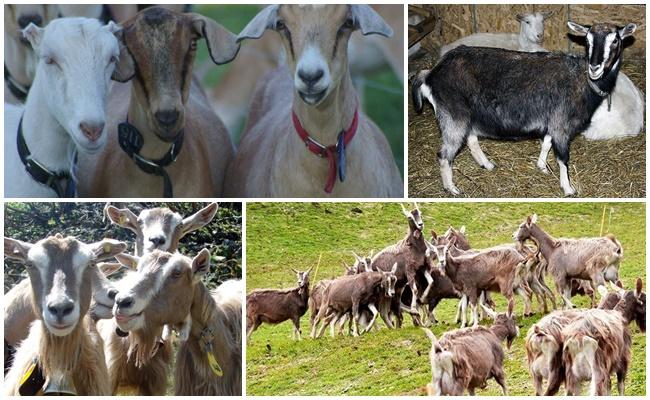
If the goat has not been covered since the last time, after 3 weeks it will come back to hunt. Readiness for mating will be manifested by bleating, reddening of the loop. The female may eat more than usual or refuse to eat. The disadvantage of the method is that the behavior of the goat is not indicative. The male can even jump on the suckling female. But with a typical reaction, checking with a goat allows you to reliably determine pregnancy at a short time.
Palpation
3 months after mating, pregnancy is checked by palpation. Experienced goat breeders test the number of kids in the offspring. On palpation, the pulse and movement of the cubs are felt, and through the phonendoscope, the heartbeat is heard.
To determine if a cat is a goat, you need to put both hands on her stomach, just above the udder. You won't be able to feel the movement of the kids right away. Sometimes breeders have to wait 40 minutes. You need to feel the goat while sitting, sensitively listen to the sensations. The kids move in waves, but hardly noticeable.
A pregnant goat strains the belly if you put your hand on it and interferes with the examination. In order for her to relax her muscles, you need to take her by the "scruff" - by the skin at the withers.
Milk change
A goat's affection, combined with cautious behavior, indicates an increase in milk supply. The change is especially noticeable after the state of heat, in which milk yield decreases and behavior becomes restless. The succumb goat produces thicker milk. It settles on the walls of the dishes. The amount of calcium in milk increases.
Rectal examination
The method helps to determine kitten in the third month.
How the examination is carried out:
- the index finger is inserted through the anus to the full length;
- point slightly up and to the left, then to the right.
During pregnancy, the pulsation of the pelvic artery supplying the uterus is felt in the rectum. The longer the period, the more it swells.

Folk ways
In private households, milk is sold.In order not to start the goats in vain and not to lose a valuable product due to an error, breeders, together with visual inspection and palpation, use several "chemical" methods for determining the pregnancy rate at an early stage.
With milk
Suctility is easiest to determine by milk. But the method is only suitable for goats that have already brought kids.
For the analysis you will need:
- milk;
- a glass of clean water;
- a syringe without a needle or a pipette.
How to tell if a goat is healthy:
- draw some milk into a syringe or pipette;
- drip into water.
A pregnant goat's milk is heavy and will sink to the bottom. Circles from drops will remain on the surface, and the water will be transparent in the middle. Regular milk clouds the water evenly throughout the volume.
The test helps to identify pregnancy, both at a month's time and 3 days after coverage. Some breeders believe that dietary patterns and water hardness can make the result unreliable. Even the difference in temperature between water and milk can be affected, so liquids should be at the same room temperature. But as an additional way of checking it, you can use it, and check the milk from time to time.
Soda application
For analysis in a home laboratory, you will need:
- morning goat urine - 0.5 cups;
- soda - 1 teaspoon.
Soda is poured into the urine and the reaction is monitored. The hiss of the solution means that the goat is not covered, and the precipitation without hissing is succinic.
Iodine check
The study also requires goat urine collected in the morning. To check, you need to drop iodine into the biological fluid. A drop remaining on the surface means fatness. If iodine mixed with urine and sank to the bottom of the glass, pregnancy did not occur.
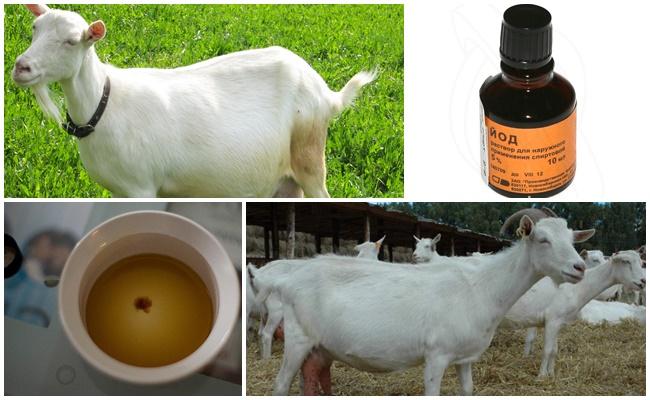
Litmus paper
For analysis, cut white sheets of A4 paper into strips.
Analysis method:
- dip the indicator paper in the urine;
- drip iodine on top.
The test is positive if the urine turns purple. Blue means no pregnancy.
Laboratory and veterinary methods
Analysis in a veterinary clinic is done in early and middle pregnancy. There are several reliable laboratory methods. But they also have disadvantages, and some are difficult to implement in a barn:
| Study type | Mode of execution and interpretation | Features: |
| Blood test | With the help of reagents, the level of sex hormones is determined. It is considered positive when elevated progesterone is detected. | It is applied 17-20 days after mating. This is done only in the laboratory. The result is not reliable in the case of a false pregnancy. |
| Examination of cervical mucus | When examining the cervix, mucus is taken for a sample, mixed with distilled water in the laboratory and brought to a boil. Pregnancy is indicated by the precipitation of mucus. In the absence of fertilization, the fluid will become uniformly cloudy. | Gives an accurate result one month after coating. The examination should be carried out under sterile conditions with a gynecological mirror. |
| Ultrasound | The ultrasound scanner data is displayed on the monitor. Thus, the presence of the fetus and the number of kids are established. | Shows the presence of a fetus from the 30th day of pregnancy. The animal can be examined with a portable scanner without transportation to the veterinary clinic. |
| Immunological rapid test for determining the pregnancy of livestock | A mixture of reagents is added to the goat urine. Darkening of the solution means succulence. | It is applied from the 15th day after coating. Convenient for use on a large farm, since the animals do not need to be taken to the clinic. Provides reliable results. The principle of action is similar to folk analysis, but instead of iodine, boric acid is included in the test. |
Sometimes breeders use a female pregnancy test. The test strip shows the response of antibodies to the hormone gonadotropin, which is found in humans and animals.Opinion about the reliability of the results also differs, as in the case of drops of milk in water.
Signs of a false pregnancy
The state of false pregnancy is accompanied by the usual symptoms, swelling of the loop and udder. The goat's milk is heavy. But after a while she comes hunting. Therefore, the only sign is the willingness to mate in the middle of the term.
Often hunting during pregnancy is explained by the fact that the embryo has resolved. But such a judgment is erroneous and contrary to the laws of biology.
The embryo is not resorbed, but it may exit prematurely. Goats often lose their fetus in one of two periods:
- on the 8-10th day - when the membrane dissolves and the egg cell adapts to feeding with uterine secretion;
- on the 20-22 day - with implantation of the embryo and the transition to feeding through the placenta.

The endocrine system of goats does not respond to fetal loss and continues to produce hormones. In some cases, a false pregnancy lasts 5 months and even ends in childbirth. But instead of the kids, liquid comes out. This condition is called a hydrometer.
Goats are polycyclic animals with a pronounced period of sexual activity. If pregnancy has not come, the hunt ends with hormonal changes and its repetition. In case of hormonal failure, the period does not start again. In this case, formations remain on the ovaries - persistent or yellow bodies. They secrete progesterone, which is found in blood and milk.
The abdomen is enlarged due to the production of a watery discharge by the uterus. Since the cervix is closed, up to three liters of fluid accumulates inside. Only ultrasound will help to detect a false pregnancy.
The disappearance of signs after 1-2 months indicates that the breeder is faced with false pregnancy. For many goats that have become pregnant, this reaction is normal. After the next mating, they become real. Pathology is suspected if the animal's body is regularly deceived. In this case, you need to contact your veterinarian.





